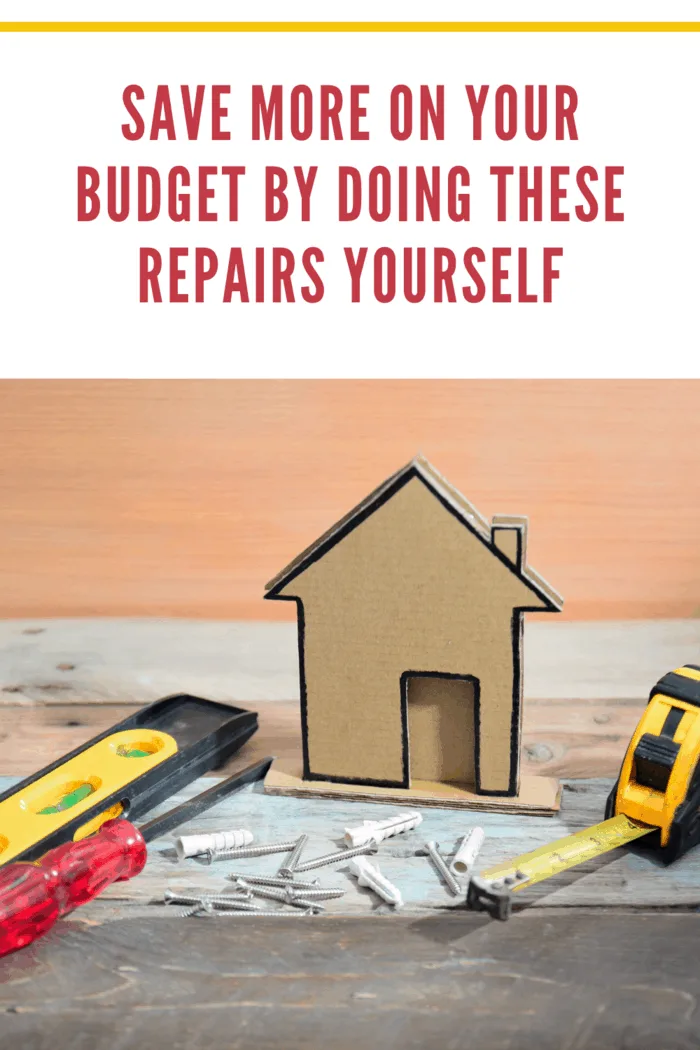Regarding repairs and maintenance, professional labor can be one of the most costly aspects of a homeowner’s budget. To save money, many homeowners choose to do some work themselves but a majority of them do not possess the know-how or the skills needed to fix their homes – even with the help of instructional videos.
Attempting a DIY home repair without complete knowledge of the task and careful preparation could result in expenses more costly than hiring a professional HVAC repairman or any other pro needed.
So before you trim the privet hedge, unclog the toilet or do other repairs, assess your skills and the materials you need first. If you need an idea on home projects you can do, consider the following projects.

Dealing with Doors
Though they look simple, doors require occasional repair and maintenance. From loose screws to squeaking, door problems are often minor but can be annoying.
For example, wooden interior doors are not exposed to elements but are still subject to climate change. If the weather is humid, these doors can swell if there isn’t enough room to accommodate the expansion between the frame and the door. To prevent damage, inspect the door to ensure there aren’t any deteriorated hinges or loose hinge screws.
When tightening loose screws, place a door wedge on the door’s latch end to balance the weight. If a door starts sticking during the rainy season or humid months, you might have to use a planing tool. If the screws are fine, but the door resists when it closes, look for tight spots.
Binding or sticking doors can squeak due to the additional pressure they put on the hinges. Hinges can also become noisy when they start oxidizing. If your door hinges squeak without anyone leaving or entering the room, stop the squeaking by using a lubricant. First, cover the area under the door with a cloth before applying oil to the hinges. Apply a few drops first then open and close the door to work the lubricant in the hinges. If the door is still squeaking, apply a few more drops.
Prepping for Paint Jobs
Whether you want to cover a nail hole or paint the entire room, paint can improve the appearance of a room’s appearance and maintain it. But before you start collecting color swatches, there are some considerations to keep in mind. Good preparation takes time, but it makes the actual painting job easier.
First, remove any hardware or fixtures that might get in the way. Remove curtain rods, door hinges, and switch plates to remove obstacles for your paint rollers or paintbrush.
Once your wall is unobstructed, clean them with a dry cloth or a damp sponge. Dust, grime, and grease buildup keep the paint from bonding on the wall and cause streaks. Make sure to clean all surfaces. Also, give your room a once over and look for gouges, nails, and other imperfections that require spackle filling.
After cleaning the wall, apply primer to the sanded areas before painting.
Clearing Clogged Toilets
When a toilet is clogged, the first order of business is not to panic. Instead, determine if a foreign object ended up accidentally in the toilet bowl. If this is the case, wear your gloves to fish the object out. You can also wait for the water in your toilet to drop to a normal level before pouring a bucket of water into it. The additional pressure often dislodges blockages.
If this does not work, a plunger is your next best option, says Family Handyman. Accordion plungers and flanged plungers are effective in solving clogs. Submerge the suction cups completely with water before you start plunging. Add more water to the bowl if you have to.
A closet auger or a plumbing snake is another option for clearing clogs. Thread them from the toilet bowl down through the piping to remove the cause of the clog.
If these options don’t work, visit your local plumbing store for carbon dioxide or compressed air cartridge delivery tools. These provide a stronger surge of pressure, which immediately clears clogs. They are pricier than plungers but cost less than hiring a plumber.
As a last resort, you can try uninstalling the toilet. Upending it will get the clog out of the way. It may be a “gross” job, but it’s better than paying a costly plumbing bill.
Some jobs are best left to professionals, but there are repairs you can do. As long as you have the right materials and learn more about a DIY job, you should be good to go!
